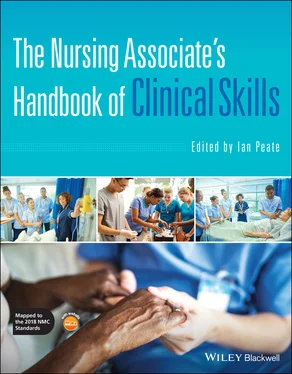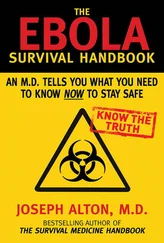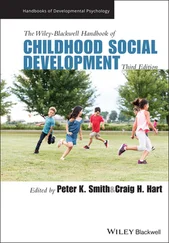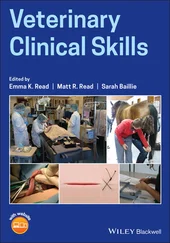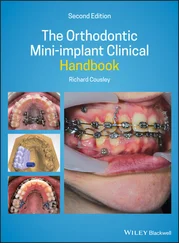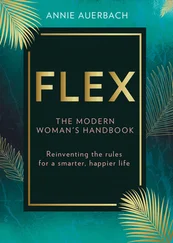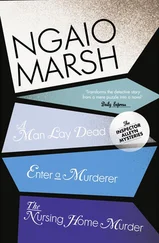The Nursing Associate's Handbook of Clinical Skills
Здесь есть возможность читать онлайн «The Nursing Associate's Handbook of Clinical Skills» — ознакомительный отрывок электронной книги совершенно бесплатно, а после прочтения отрывка купить полную версию. В некоторых случаях можно слушать аудио, скачать через торрент в формате fb2 и присутствует краткое содержание. Жанр: unrecognised, на английском языке. Описание произведения, (предисловие) а так же отзывы посетителей доступны на портале библиотеки ЛибКат.
- Название:The Nursing Associate's Handbook of Clinical Skills
- Автор:
- Жанр:
- Год:неизвестен
- ISBN:нет данных
- Рейтинг книги:4 / 5. Голосов: 1
-
Избранное:Добавить в избранное
- Отзывы:
-
Ваша оценка:
- 80
- 1
- 2
- 3
- 4
- 5
The Nursing Associate's Handbook of Clinical Skills: краткое содержание, описание и аннотация
Предлагаем к чтению аннотацию, описание, краткое содержание или предисловие (зависит от того, что написал сам автор книги «The Nursing Associate's Handbook of Clinical Skills»). Если вы не нашли необходимую информацию о книге — напишите в комментариях, мы постараемся отыскать её.
The Nursing Associate’s Handbook of Clinical Skills
The Nursing Associate’s Handbook of Clinical Skills
The Nursing Associate's Handbook of Clinical Skills — читать онлайн ознакомительный отрывок
Ниже представлен текст книги, разбитый по страницам. Система сохранения места последней прочитанной страницы, позволяет с удобством читать онлайн бесплатно книгу «The Nursing Associate's Handbook of Clinical Skills», без необходимости каждый раз заново искать на чём Вы остановились. Поставьте закладку, и сможете в любой момент перейти на страницу, на которой закончили чтение.
Интервал:
Закладка:
Violet Flag
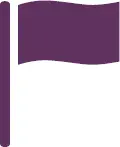 Active listening is an act of care. It is an outward display of genuine interest in what another person has to say, and this is regardless of where that person is being cared for (the care setting).
Active listening is an act of care. It is an outward display of genuine interest in what another person has to say, and this is regardless of where that person is being cared for (the care setting).
The nursing associate needs to understand that the act of listening requires us to avoid imitation and, instead of this, to rely on our humanity as we strike a balance between openness and interpretation. When using this humanistic approach, this has so much potential to permit us to appropriately respond to those who speak to us, be this in a hospital, in the person’s own home, in a place of detention or with those who have no homes – the homeless.
Touch Point
Active listening is an essential element of creating a therapeutic relationship. When a therapeutic relationship is created, a better healthcare experience can be enjoyed by everyone involved. Active listening takes time and experience, but it is important to invest in this essential communication skill.
Conclusion
One of the biggest challenges in healthcare is that of time. To be able to find time in a busy working day with a long list of patients who need care is very difficult. There is no solution to this, but if patients are not listened to and heard, then their healthcare needs cannot be met. By actively listening, the healthcare professional can foster relationships and be the right person for that patient to talk with – the development of a therapeutic environment. An interaction does not need to be long; if the healthcare professional can listen actively, hear what they are being told and act on it; then time need not be an issue.
References
1 Ali, M. (2017) Communication skills 2: overcoming barriers to effective communication, Nursing Times, 114(1): 40–42.
2 Ali, M. (2018) Communication skills 5: effective listening and observation, Nursing Times, 114(4): 60–61.
3 Alsawy, S., Tai, S., McEvoy, P. and Mansell, W. (2019) ‘It’s nice to think somebody’s listening to me instead of saying “oh shut up”’. People with dementia reflect on what makes communication good and meaningful, Journal of Psychiatric Mental Health Nursing, 27(2): 1–11.
4 Egan, G. (2010) The skilled helper: a problem management and opportunity development approach to helping (9th edn), Pacific Grove, CA: Brooks/Cole.
5 Haley, B., Seongkum, H., Wright, P., Barone, C., Rettinganti, M. and Anders, M. (2017) Relationships among active listening, self‐awareness, empathy, and patient centered care in associate and baccalaureate degree nursing students, Nursing Plus Open, 3: 11–16.
6 Nemec, P., Spagnolo, A. and Soydan, A. (2017) Can you hear me now? Teaching listening skills, Psychiatric Rehabilitation Journal, 40(4): 415–417.
7 NHS Digital. (2018) Data on written complaints in the NHS, England: Health and Social Care Information Centre.
8 Nursing & Midwifery Council. (2018a) The code: professional standards of practice and behaviour for nurses, midwives and nursing associates, London: Nursing & Midwifery Council.
9 Nursing & Midwifery Council. (2018b) Standards of proficiency for nursing associates, London: Nursing & Midwifery Council.
10 Peplau, H.E. (1952) Interpersonal relations in nursing, New York: Putnams Sons and (1988) London: MacMillan Education Ltd (reprinted).
11 Prince‐Paul, M. and Kelley, C. (2017) Mindful communication: being present, Seminars in Oncology Nursing, 33(5): 475–482.
12 Sloan, M.C. (2010) Aristotle's Nicomachean ethics as the original locus for the Septem circumstantiae, Classical Philology, 105 (3): 236–251.
13 Sully, P. and Dallas, J. (2010) Essential communication skills for nursing and midwifery (2nd edn), London: Elsevier Ltd.
14 Webb, L. and Miller, E. (2011) Nursing: communication skills in practice, Oxford: Oxford University Press.
6 Information Gathering
Julia Williams
Bucks New University (Uxbridge Campus), UK
Chapter Aim
This chapter aims to provide the reader with an understanding of how information can be gathered and used to inform practice.
Learning Objectives
At the end of the chapter, the reader will be able to:
Understand how evidence‐based practice requires the nursing associate to listen, inform and involve patients in decision‐making with regards to their care and treatment
Demonstrate an awareness of the two types of knowing
Appreciate the value of gathering information in the development of the therapeutic nurse–patient relationship
Understand the advantages of being physically and mentally present in every interaction and the ability to prioritise relationship building
Test Yourself Multiple Choice Questions
1 Hierarchy of evidence refers to:Legal data onlyA ranking system whereby a range of different methodologies are graded according to the validity of their findingsA system that is based on objective data onlyAll of the above
2 How many types of knowing are there?123
3 Physical knowing relates to the patient’s:Responses, psychological function and body typeResponses and physical functionResponses, physical function and body type
4 Psychological knowing relates to the patient’s:Feelings, perceptions, expectations and beliefsPerceptions, expectations and beliefsExpectations and beliefs
5 The nursing associate is required to:Involve the patient in the decision‐making of his/her care and treatmentAdvise and involve the family in the decision‐making of their care and treatmentListen, inform and involve the patient in the decision‐making of their care and treatment
Introduction
One of the main roles expected of the nursing associate is to deliver hands‐on, evidence‐based patient‐centred care as a part of the nursing team (Health Education England 2019; Nursing & Midwifery Council 2018a). The concept of patient‐centred care refers to the caring of patients in a meaningful and valuable way that is entirely individual to that patient (McCormack & McCance 2010). The Nursing & Midwifery Council’s (2018b) Code is clear in informing the nursing associates that they must act in partnership with those receiving care, and in order to do this effectively, they are required to gather relevant information from the patients and, if appropriate, their family.
The nursing associate has to listen, inform and involve the patient in the decision‐making of his/her care and treatment. Evidence‐based practice refers to the application of appropriate research findings to underpin practice, such as identifying the most effective treatment and management or having a deeper appreciation of the experiences of being a patient. In order to deliver such patient‐centred care, both concepts need to work in harmony, requiring the nursing associate to sift through and gather the relevant information to support any given clinical situation. This chapter looks at how the nursing associate may gather information from a variety of sources. It will consider the theoretical features that allow nursing associates to do this, as ultimately, how and what information we gather will provide the knowledge to support clinical judgements and decision‐making in the delivery of individualised patient care.
Green Flag
 The Code (Nursing & Midwifery Council 2018b) requires the nursing associate to always practise in line with the best available evidence to make sure that any information or advice given is evidence‐based, including information relating to using any healthcare products or services.
The Code (Nursing & Midwifery Council 2018b) requires the nursing associate to always practise in line with the best available evidence to make sure that any information or advice given is evidence‐based, including information relating to using any healthcare products or services.
Интервал:
Закладка:
Похожие книги на «The Nursing Associate's Handbook of Clinical Skills»
Представляем Вашему вниманию похожие книги на «The Nursing Associate's Handbook of Clinical Skills» списком для выбора. Мы отобрали схожую по названию и смыслу литературу в надежде предоставить читателям больше вариантов отыскать новые, интересные, ещё непрочитанные произведения.
Обсуждение, отзывы о книге «The Nursing Associate's Handbook of Clinical Skills» и просто собственные мнения читателей. Оставьте ваши комментарии, напишите, что Вы думаете о произведении, его смысле или главных героях. Укажите что конкретно понравилось, а что нет, и почему Вы так считаете.
